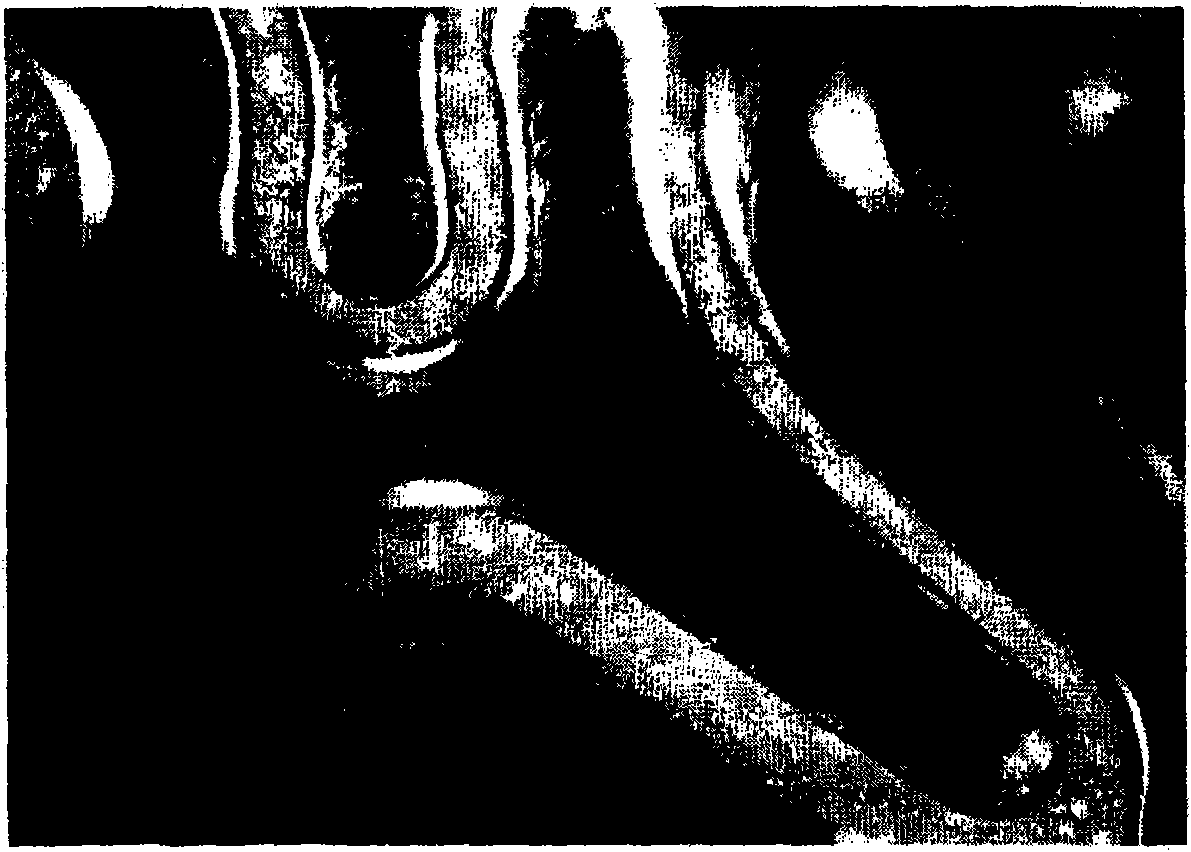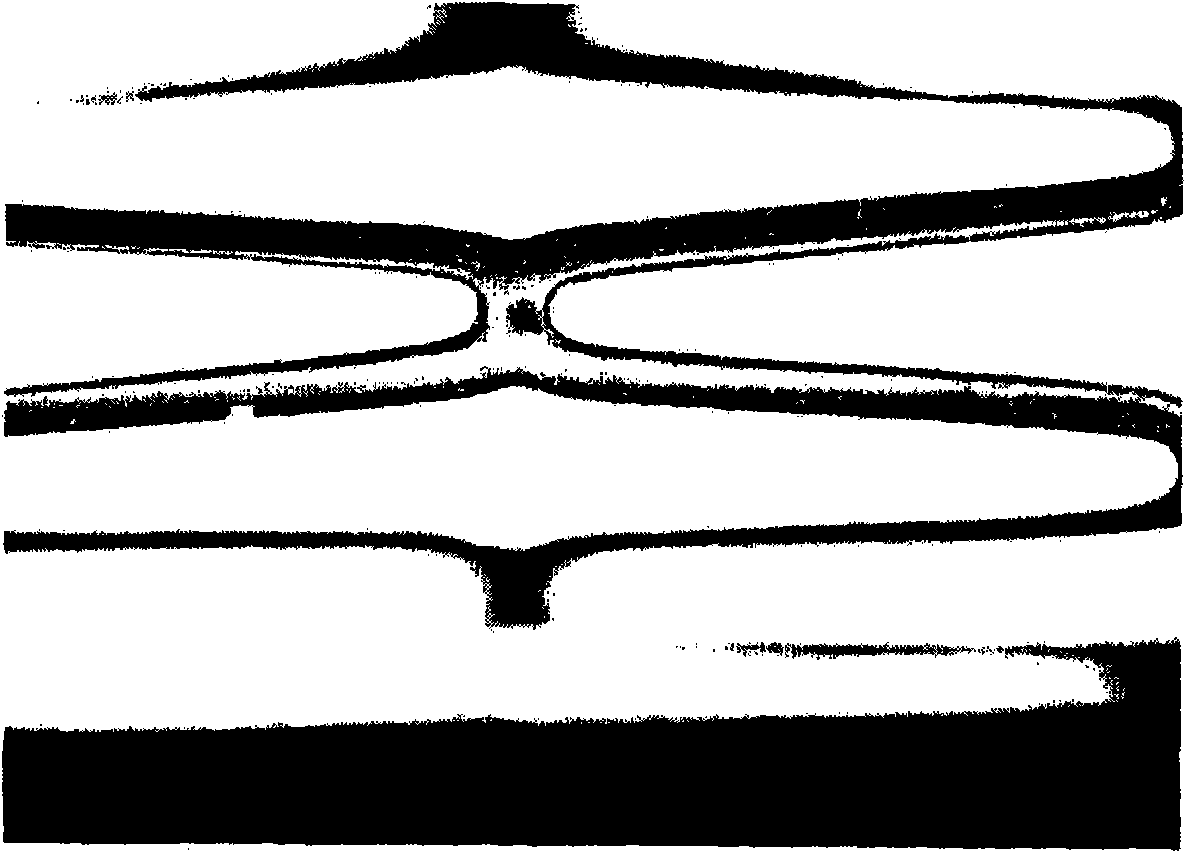Calcium phosphate coated stents comprising cobalt chromium alloy
A technology of cobalt-chromium alloy and calcium phosphate, which is applied in the direction of coating, electrophoretic plating, electrolytic coating, etc., and can solve problems such as narrowing
- Summary
- Abstract
- Description
- Claims
- Application Information
AI Technical Summary
Problems solved by technology
Method used
Image
Examples
Embodiment 1
[0042] Embodiment 1 (comparative example)
[0043] This example describes the deposition of hydroxyapatite on a scaffold composed of cobalt chromium alloy without the pretreatment described herein. Deposition of hydroxyapatite is also disclosed in the Master of Science thesis "Calcium Phosphate Coatings on Coronary Stents by Electrochemical Deposition" by Tsui, Manus Pui-Hung, Columbia University, 2006, the contents of which are incorporated herein by reference.
[0044] The stent used was an L605 cobalt-chromium stent (cobalt-chromium-tungsten-nickel alloy, MIV Therapeutics Company), and the dimensions of the stent were: length 19 mm, outer radius 1.6 mm. The surface of the stent was electropolished, then cleaned with distilled water in an ultrasonic bath followed by ethanol. Figure 1A and 1B are two photographs from different angles of the electropolished stent. It can be seen from these photographs that there are many precipitates on the surface of the stent.
[0045] A...
Embodiment 2
[0050] This example describes a method for coating cobalt chrome alloys after an acid etch pretreatment.
[0051]A concentrated etch reagent is prepared by mixing 95-98% sulfuric acid and 36-40% hydrochloric acid in a 1:1 ratio. A 25% acid etch working solution was prepared by diluting the 1:1 reagents with HPLC grade water (all percentages are by volume). The working solution consisted of 4.5% hydrochloric acid, 12.25% sulfuric acid and 83.25% HPLC grade water. L605 cobalt-chromium stents were cleaned by sonicating in distilled water followed by sonication in ethanol followed by ethanol rinsing and air drying. The dried stents were immersed in a closed Pyrex tube containing 5 mL of the working solution, and gently shaken for 1 hour at 25° C. in a rotary bath. The stents were removed, rinsed thoroughly with HPLC grade water, and air dried. Figure 4A and 4B is a photograph of the surface of the stent after acid etching. It can be seen that when combined with Figure 1A an...
PUM
| Property | Measurement | Unit |
|---|---|---|
| pore size | aaaaa | aaaaa |
| thickness | aaaaa | aaaaa |
| pore size | aaaaa | aaaaa |
Abstract
Description
Claims
Application Information
 Login to View More
Login to View More - R&D
- Intellectual Property
- Life Sciences
- Materials
- Tech Scout
- Unparalleled Data Quality
- Higher Quality Content
- 60% Fewer Hallucinations
Browse by: Latest US Patents, China's latest patents, Technical Efficacy Thesaurus, Application Domain, Technology Topic, Popular Technical Reports.
© 2025 PatSnap. All rights reserved.Legal|Privacy policy|Modern Slavery Act Transparency Statement|Sitemap|About US| Contact US: help@patsnap.com



